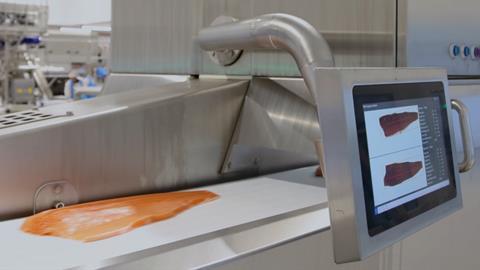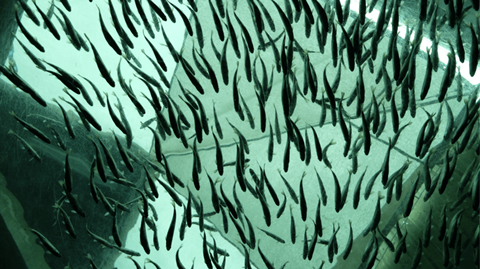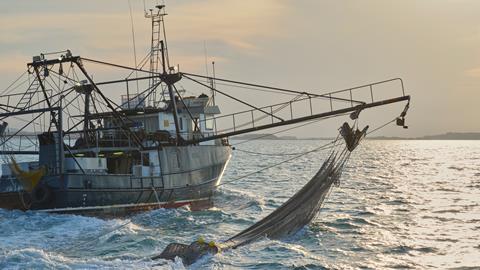1. The Markusnet type MS is primarily designed for manual lifting of one person at a time.
Although the Markusnet can be used to hoist person from sea/water both in sitting, standing and horizontal position, it is primarily designed for manual lifting of one person up to 6 to 8 m side from sea/water and to provide a deck crew, located up to 40m above the sea/water (depending on length of lifting lines “B”) the possiblility to activate a conscious person in the sea/water and bring it in to safety at the ships side ready to be hoisted onboard and by that increase the possibility of rescue and reducing the need for in-water rescue operation.
2. Freeboard height / Need for lifting lines?
When you order Markusnet, remember that the lifting lines on the inner end of the unit “B” (see description drawing on MS fact sheet) must cover the distance from water level to the rescue platform gunwale or rail, i.e. the distance which is best suited to your requirements.
The Markusnet type MS is designed for commercial vessels, offshore installations, quays, canal walls, dams and bridges.
The MS type is available as standard with 5m (MS.05), 10m (MS.1), 20m (MS.2), 30m (MS.3) and 40m (MS.4) lifting lines “B” on inner end of the unit. To meet the freeboard height on vessels over 5 m height, when throwing the line to the MOB, put the lifting lines overboard, hold to the net structure and then release it overboard at the same time as you throw the rescue line.
3. The number of crew members.
One deck crew can move the Markusnet type MS and deploy to a responding person within 15-20 metre distance from the side and bring the person into safety ready to be manually lifted or hoisted with crane in sitting or standing position.
Two deck crew can lift one average weight person, manually onboard up to 6 metre height. Four deck crew are needed to secure manual lifting of such person more than 6 metre.
Minimum four specially trained deck crew and one diver are needed to operate an in-water rescue. One on safety line to in-water rescuer, one on the crane, one on the trow-line and general control and one backup diver.
4. The personal risk of the MOB rescuer.
The personal risk of the MOB rescuer is often not considered, and injuries they sustain are often not recognized, or hidden, like back injuries. The MOB rescuer, particularly if rescuing a friend or relative, will exceed his/her body limits to help in an emergency situation. The injuries they sustain are often not apparent until long after the rescue. Only by suitable training and exploring and knowing your limits, can you avoid such accidents. Then there is the legal question. Who can order someone to enter the water in hazardous circumstances at sea? It is better to be prepared and know who is willing or able, and whether or not he/she has the appropriate support on board, to perform in-water rescue safely. It may sometimes be the only option, and the most secure one both for the rescue crew and the man overboard.
5. Why and when should you have two or more Markusnets on board?
a) The special advantage of carrying two or more Markusnets is that it allows the possibility of both the MOB(s) and the rescuer to be lifted manually, at the time. Two persons in one net excludes the manual lifting possibility. Two or more Markusnets are therefore needed to allow efficient management of the group in the water increase flexibility and make maximum use of the crew.
b) The in-water rescuer should always have his own security. He should always have a separate net from the one he has to put the MOB casualty into, so he can be pulled up manually at the same time or just after the casualty.
c) It is good practise to have a separate Markusnet especially for training purposes.
The need to have two or more Markusnets on board applies to vessels with enough crew to effect the rescue. On very large vessels and quay areas, we recommend the Markusnet to be located at a maximum 50 m distance from each other, and in sight of the location of the next nearest Markusnet when possible.
6. MOB rescue speed – Flexibility.
When a man is overboard, the first action is usually the most important. If the rescuer can release the unit to the MOB in seconds, from anywhere along the side of the platform (rescue deck), and by that bring the MOB into safety, there will be a reduced need for in-water rescue and the chance of a quick, effective and safe rescue assured. This is particularly important where there is a strong current or high waves and even small boats can have difficulties to get near the man overboard.
7. The reaction of many MOB casualties.
Quite a number of people who fall into cold seawater, lose their ability to think simultaneously and they panic.
a) These people can be a great danger to their in-water rescuer.
b) These people are unlikely to try and put anything around them, such as a life-buoy or life-sling, or anything they see as floating barrier. These people will attempt to use anything they see as float and are likely to lock their arms around such things.
c) These people will, if reached early, pull themselves into safety and secure themselves into something that is open, and provides buoyancy and security. The Markusnet structure has been designed to meet exactly that kind of casualty.
8. The ability to secure the MOB casualty, even at a distance from the vessel.
Very often the vessel itself is the best rescue platform, as there are limits to where and when MOB rescue boats can be used. In such situations, the vessel itself can be a danger to the man overboard. It has proven to be valuable to be able to have the MOB secured in the Markusnet, at some distance from the vessel, so that the sea wave can be used to lift the casualty as high as possible in the water, and the rest of the lifting can be done manually in seconds. The attachment line “A” is used to cover this distance.
9. The law of nature.
Two rescuers can lift one man manually with Markusnet, but six rescuers will have difficulty lifting two. It is never advisable for two people to be lifted manually at the same time in Markusnet. This should be respected in training so that everyone has a clear understanding of this.
10. Backup security recommendation
It is always advisable to have backup security in rescue, since rescuers can be expected to go to their limits in rescue operations. Never risk the life of a rescuer. Have a Markusnet near the MOB boat station or transport boat station and have a separate Markusnet unit for the in-water rescuer.
11. Prevention of MOB accidents / Expect the unexpected.
By providing your crew with Markusnet, and by offering appropriate training and education in the use of it, you will be doing your utmost to prevent a MOB accident as well as preventing injury to your crew during a MOB rescue operation. You are also equipping your vessel as a professional MOB rescue platform at sea.
12. New requirements in SOLAS coming into force 2014
In 2013 every owner, operator and officer will be required to be able to prove that their ship has the capability to recover person at or near the ship side. The Markusnet is the ideal solution to fulfil this requirement as it is a prove recovery system with over 40 year history of use in the rough North Atlantic sea, it fits all types of ships and is type approved for use on alls ships and offshore installation by Lloyd´s Register.
Edition written by Petur Th. Petursson
For further information:
Markus Lifenet Ltd.- Hvaleyrarbraut 27, IS-220 Hafnarfjörður, Iceland
sales@markusnet.com | www.markusnet.com | +354 565 1375












